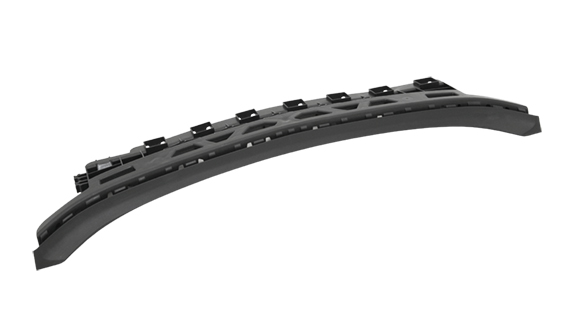The electrically controlled variable camshaft phasing system Vanos is a solution that has been used for many years in the engines of BMW cars. How does it work, what benefits does it provide and how to take care of it to increase driving comfort and reduce the impact of traffic on air quality?
What is a Vanos system?
Reducing environmental impact is now increasingly important in the automotive industry. Road transport is responsible for a sizable portion of pollution in many European countries – for this reason, more regulations are being introduced that seek to reduce exhaust emissions. However, ecological solutions have been present in cars for a much longer time: one example is precisely the Vanos system. This is a special camshaft installed in the engines of BMW cars, which is characterized by variable positioning and camshaft phase control. Its premiere took place as early as 1992 – then it went to the M50 engine, which powered the E34 and E36 models. Over the years, however, the system has evolved considerably to provide even more driving benefits.
How does the Vanos system work?
The Vanos system controls the valves on the camshafts – both intake and exhaust. The entire system is operated by specially designed coils to ultimately provide faster engine warm-up times and reduced emissions while driving. The drive unit with the Vanos system consists of a combination of mechanical and hydraulic mechanisms, where an important role is played by a sensor that watches over the operation of the whole, as well as a connector that allows the solution to operate safely.
The Vanos system used by BMW is one of the answers to the question of how to optimize the performance of the car and at the same time reduce the amount of pollutants emitted into the air. Such solutions could have a sizable impact on the future of low-emission vehicles – especially in the context of new regulations, such as the refreshed Euro 7 standard, which is to come into force as early as in 2025.
What is a double Vanos?
We already know what the Vanos system is and what its basic principle of operation is – but its different variants should also be mentioned. After all, this solution is available in single and double versions, which differ in the need and method of adjustment. The single Vanos works independently and does not require any intervention in regulating the operation of the system. With the double one, synchronization control is necessary instead. The dual variant can be recognized by the flat intake manifold, the presence of two shaft position sensors, and the double black plastic.
What makes the use of systems such as Vanos so important? Among other things, it's a result of the introduction of increasingly stringent emission restrictions. One of the most important regulations in this regard is the Euro 7 standard, which forces automotive companies to make various changes leading to a reduction in the formation of pollutants. It is worth taking an interest in this topic now to find out what awaits cars with internal combustion engines after 2025 and what novelties can be expected in the automotive market. Cars using alternative energy sources, including fuel cell vehicles, will also play an increasingly important role.
Damaged and displaced Vanos – symptoms and costs
The Vanos system is a rather complicated one, and as a result, various malfunctions and problems can sometimes occur while driving. Regardless of whether a single or double variant is present in the car, failures affect the operation of the entire engine. Among the most important symptoms are:
- uneven engine operation at idle;
- knocking coming from the engine compartment;
- a significant drop in vehicle power;
- stalling of the engine when slowing down (e.g., in traffic jams or when approaching traffic lights);
- RPM fluctuations during engine warm-up;
- noticeable vibrations in the vehicle when starting the car;
- errors indicating problems with the camshaft sensor.
Since the Vanos system is responsible for controlling the timing of the opening and closing of the intake and exhaust valves, it has quite an impact on vehicle performance, fuel consumption and exhaust emissions. A faulty Vanos sensor usually does not contribute to the failure of the entire drive unit, but it is vital to repair or replace it as soon as possible after symptoms of a malfunction appear.
Vanos – repair costs. What prices do you have to consider?
Costs in the case of failure of the Vanos system vary widely and depend primarily on which components are damaged. The most common malfunctions involve sealing rings, which are relatively inexpensive to repair – usually it will be up to 100 EUR. In the case of more serious failures, however, drivers must be prepared to spend up to several hundred euros. The regeneration of the Vanos system, on the other hand, usually costs approx. 200-300 EUR, while the cost of buying a completely new element is 500-700 EUR.
Automotive components to help reduce fuel consumption – Knauf Automotive

When considering how to reduce fuel consumption, manufacturers rely on a variety of solutions. In addition to systems such as Vanos, the design of the vehicle itself is also of considerable importance. In this case, the weight of individual components plays a major role. More and more automotive companies are opting for modern plastics, such as EPP and EPS, which combine low weight with high strength. Examples include components such as the engine cover and other injection molded automotive components offered by Knauf Automotive.